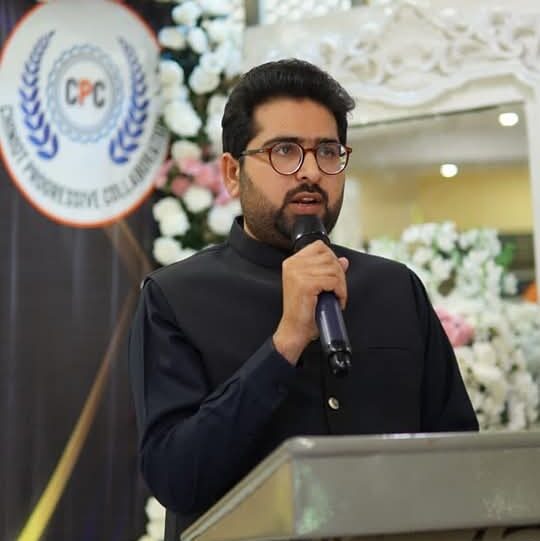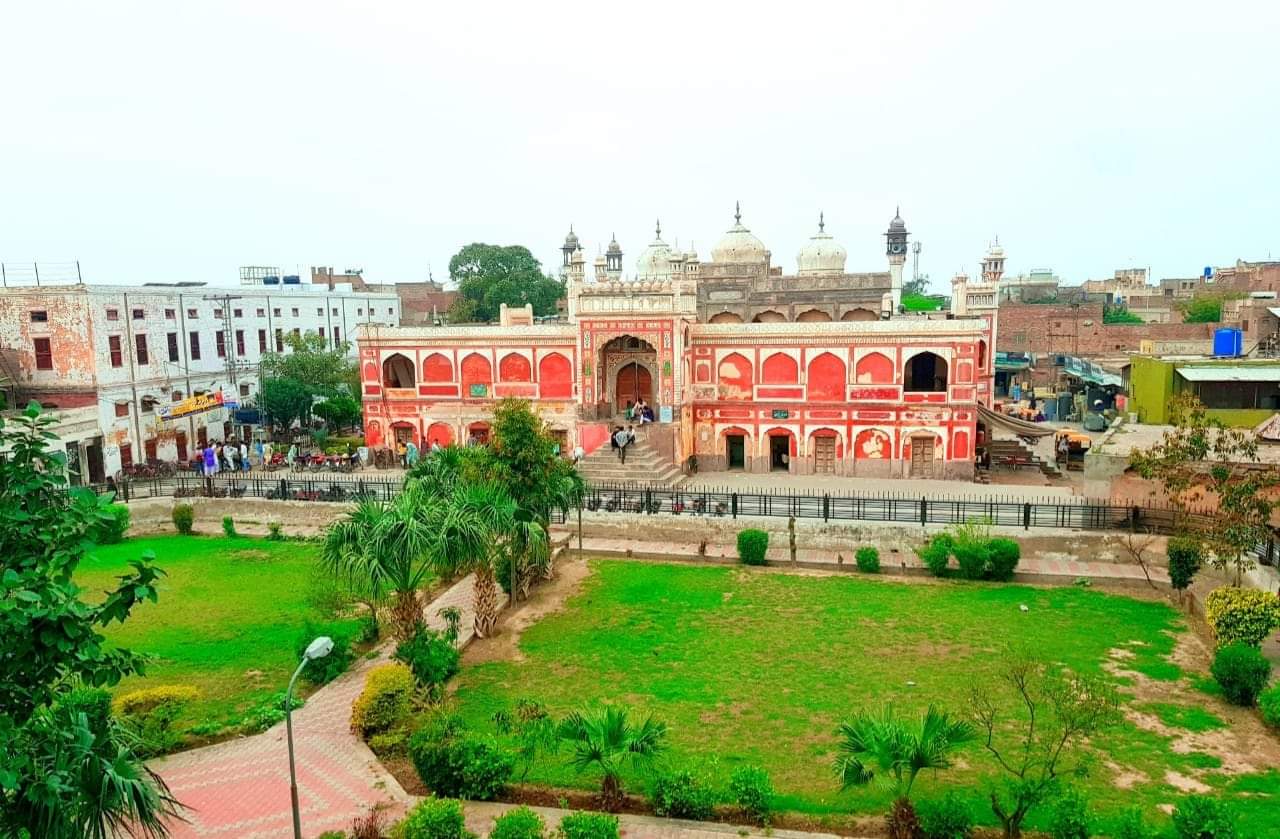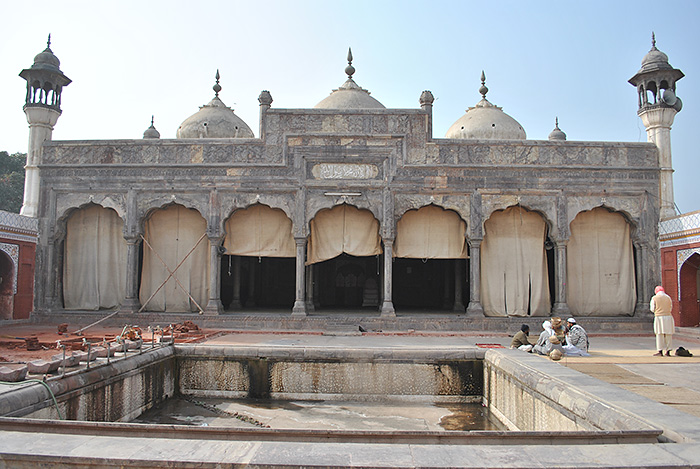Chiniot through the Ages: From Mughal footprints to Modern Struggles
The history of Chiniot is ancient and multi layered as its roots date back to Vedic times. It has seen the reign of successive empires, Mauryan, Indo-Greek, Kushan, Gupta, Delhi Sultanate, and the Mughals. The city is supposed to have found its origins by a Hindu Raja named Chani and “Chiniot” literally means of Chani. It thrived as an important hub along the historic trade routes
The armies of Alexander the Great are believed to have marched through the region during his conquest of the Punjab in 326 BCE; the city, which covered more than 60 times in area what it does today, was part of the oldest recorded history of India, stretching from 2500 BC. After the fall of the Mughal rule, this district was conquered by the Sikh Empire and later annexed by the British Raj in 1849. It became an administrative and agricultural center and the British annexed it as a tehsil (subdivision) of Jhang District. Chiniot was a tehsil of Jhang over 150 years.
Chiniot is among the most unique districts of Punjab, Pakistan, which is on the fertile lands of River Chenab. Geographically, it lies in an area of 2,643 square kilometers within Faisalabad Division and it is strategically located between the districts of Faisalabad, Jhang, Sargodha and Hafizabad. This is place makes it a transit corridor in central Punjab. The district was created on 1 July 2009, becoming Punjab 36th district when it separated the previous Jhang District. Administratively, it is divided into three tehsils, Chiniot, Lalian and Bhawana. A total of 39 union councils, 361 villages, and four municipal committees lie within this structure, and the road structure is around 1,312-1,327 kilometers in length, mostly under the province jurisdiction. This system of state governance allows the district administration, headed by the Deputy Commissioner, District Police Officer, and devolved health and education authorities to monitor revenue collection, development projects, policing, and basic needs.
The 2023 Census recorded the population at 1,563,024, with an almost 256,600 households forming part of it. This population distribution is made up of 68.54 percent who live in the rural areas and 31.46 percent who live in urban settlements. The district has a sex ratio that is slightly above average because it is 102.41 males per 100 females, and the population density is close to 591 persons per square kilometer. A large percentage of the population is youthful with about 26.7 percent being younger than ten years. The literacy rate is still one of the developmental challenges with the overall literacy rate being 55.05 percent meaning 64.64 percent have literacy among the male and 45.19 percent among the female population. Religious makeup shows that 95.47 are Muslims, 0.33 Christians, and 4.3 are Ahmadis, most of them in Rabwah (Chenab Nagar). Other minor religious affiliations are Hindu at 0.01 percent and small percentages of the others. In terms of language, the people are predominantly Punjabi speaking with 95.08 percent speaking Punjabi, Urdu at 3.41 percent and Pashto at 1.14 percent (Pakistan Bureau of Statistics, Census 2023).
The Mughal period saw the flourishing of the city as a thriving center of architecture, trade and craftsmanship; the city developed a reputation of producing some of the finest artisans and masons. The Shahi Mosque at Chiniot, built between 1646 and 1655 under the watchful eyes of Saadullah Khan, the Grand Vizier of Shah Jahan is one of the best architectural monuments in central Punjab. The other major landmark is Omar Hayat Mahal which is also referred to as Gulzar Manzil, a five-story structure constructed during 1923-1935 and was built by a merchant of wealth, Sheikh Omar Hayat. This is a haveli, which is also called the Taj Mahal of Punjab because of the great wood carving, stonework and the lush decor that beautifully displays the art of excellence developed in Chiniot. These monuments not only play a pivotal role as heritage resources but also remind them of the economic prosperity that once characterized the city.
Chiniot also serves as the origin of and growth place of a great number of distinguished individuals who have in diverse ways contributed to science, architecture, politics, culture, business and community service. It has given out many prominent figures who have made their mark in Pakistan and other countries. The most notable of them is Professor Dr. Abdus Salam, the Nobel Laureate in Physics (1979), whose grave in Chenab Nagar (Rabwah) is visited by the people all over the globe. The architectural heritage portrays the city through Sheikh Omar Hayat, the owner of the famous Omar Hayat Mahal, and Nawab Saadullah Khan the Grand Vizier of the Mughal Emperor Shah Jahan who commissioned the Shahi Mosque at Chiniot.
Notable figures in the political arena are Ilyas Chinioti & Qaiser Ahmad Sheikh (multi-term MPA/MNA), Imtiaz Ahmad Lali and Ghulam Muhammad Lali, both powerful politicians, Syed Inayat Ali Shah & Syed Zulfiqar Ali Shah. Chiniot is also the home of Mian Muhammad Mansha, one of Pakistan’s richest men, a business magnate, CEO of the Nishat Group. In the arts and culture, Nasir Chinyoti is a famous stage and film comedian, folk musician Allah Ditta Lonay Wala is renowned and his son Nadeem Abbas has added value to Punjabi and Saraiki music. Chiniot further is linked with historical and local legend of Pandit Kautilya (Chanakya) of the Mauryan Empire. Collectively, these personalities demonstrate how Chiniot has endured in engineering, science, politics, business, culture and heritage.
Culturally, Chiniot is also set apart by its handicraft, especially furniture. The district is also known around the world due to its hand crafted wooden furniture which are renowned to have Mughal and Persian designs, flora and jharokha patterns. It has always passed on through the generations of artisans, and this industry today forms the spine of the urban economy of Chiniot. The cluster contains more than 3,300 small and medium-sized manufacturing enterprises, including the family workshops to larger showrooms. The Trade Development Authority Pakistan estimates the wooden furniture industry to contribute approximately 40,000 direct jobs in the country of which Chiniot forms the biggest hub of carved furniture in Pakistan. The data in the industry has stated that 8 million USD worth of wooden furniture were sold to the USA in 2022 and 35 percent of it was produced in the Chiniot workshops. In 2020 the share resulted in 28% (US$5.4 million) and in 2021 in 31% (US$6.3 million). Nonetheless, there are still some issues of quality control, kiln-drying, certification, branding, and acquisition of international markets.
The economy of Chiniot is dualistic, in terms of age-old farming and the thriving arts and crafts. Major crops produced in the irrigated fertile lands of the Chenab River include wheat, sugarcane, citrus, and guava- on a cultivated area of 533,034 acres (528,634 irrigated and 4,400 unirrigated); the uncultivated area burdens 95,367 acres of land.
In addition to agriculture, the wood furniture industry is the major factor of urban economy in Chiniot. According to local business association leaders, there should be about 500 furniture stores and 6,000 small and large workshops and the industry contributes to 60% of the local livelihoods as many families are either directly or indirectly related to furniture trade. But the industry is highly divided, quality control is problematic, drying methods are outdated and there is no infrastructure in export markets.
Livestock population of the district is around 0.612 million and the district industrial base is diverse, comprising of three sugar mill, five textile mill, 85 brick kiln, three flour mill and about 353 furniture, total 609 industrial units.
In the education and development front progress has been slow but evident. There are a number of institutions of higher learning in the district, including, Government Islamia College, founded as an educational institution in 1901 and raised to the level of a college in 1954; it has a large campus of 22 acres, along with a library, hostel, and sports ground, and functions under affiliation with GC University Faisalabad, Government Graduate College for Women, and the Chiniot campus of Government College University Faisalabad (GCUF), which offers (BS programs in Sociology, English, Mathematics, Business Administration, and many more). Numerous other schools are located in the district: Chenab College, Masoomeen Foundation High School & College, Punjab College, Superior Group of Colleges (Chiniot Campus), KIMS College, NUCES and high and primary schools. Omar Hayat Mahal has been turned into a public library that maintains the heritage but serves a knowledge role.
Such institutions will demonstrate an increasing effort to combat the literacy divide apparently highlighted in the census. However, the low tendency of the female population to be literate (45.19 percent) points to the fact that women still have inferior access to education. According to social development indicators, additional investments need to be made in secondary and tertiary education, particularly in the area of technical and vocational training as they will facilitate socio-economic growth and support the furniture industry in Chiniot.
The tourism in Chiniot is based on its historic architecture and also its natural environment. The Shahi Mosque, Omar Hayat Mahal are two major sites of heritage tourism here as they exemplify the Mughal and 20th century architecture and crafts. The River Chenab provides a scenic and recreational feature, and Rabwah stands as the resting place of Dr. Abdus Salam. Chiniot attracts tourists through its furniture bazaars, where live carving and polishing can also be observed; this makes up a special cultural tourism experience, where people can learn more about the tradition of the artisan carvers.
There are 54 state-run healthcare facilities connected within Chiniot district. At the top is the District Headquarters (DHQ) Hospital which was a charitable trust in 1961, upgraded to DHQ in 2009 and fully equipped with a CT scan, cardiac block, hepatitis block, and incinerator in 2018. The hospital has a bed strength of 94, approximately 6 doctors with multi-specialty like medicine, surgery, pediatrics, gynecology, cardiology, radiology, dialysis and TB/chest unit. An additional 125-bed DHQ hospital is currently under construction, which is supposed to be operational in 2025.
Supporting this are two Tehsil Headquarters (THQ) hospitals at Lalian and Bhawana, three Rural Health Centres (Chak 14 JB, Ahmad Nagar, Barana), 36 Basic Health Units, two Maternal & Child Health Centres, a TB hospital and two government dispensaries. Over the past few years, reforms have enhanced services by providing new equipments, availing medicine and using digital system to handle the hospital. Nonetheless, the issues of understaffing and increasing patient numbers still loom.
However, Chiniot has a few challenges that have persisted to slow its growth. Urban Unit Punjab observed that it has untreated wastewater, ineffective solid waste management and pollution that are posing threats to its environment and groundwater. Flooding of River Chenab frequently destroys fields and villages. There are also social challenges such as poor literacy level, shortage of healthcare professionals, unemployment and rural-urban disparity. Intense urbanization has led to housing inadequacies, road jams and even sanitation issues, coupled with poor governance and climate change adding to the pressures of growing the district.
The district needs a multi-dimensional approach in order to overcome these challenges. It is possible to address environmental concerns by setting up new waste water treatment facilities, an industrial scientifically based sanitary landfill and rigorous implementation of industrial effluent control rules, especially that of furniture industry. Structural measures to curb the flood risks should be undertaken through strengthening the embankments, extending the drainage lines and early warning systems. On social fronts, it is essential to improve literacy using specific programs focusing on women and rural populations, vocational training, provision of sufficient staffs and facilities in health centers. On the economic front, the iconic furniture industry in the district should be transformed through branding, certification, embrace technology, and export-related opportunities. Through design of housing schemes, effective traffic management, sanitation facilities and digitization of municipal facilities, the urban management can be enhanced.
Lastly, institutional capabilities to handle local governance, financial autonomy, capacity-building, and community participation would provide the bedrock to the sustainable development. With more than 1.56 million people including a literacy rate of 55 percent, Chiniot has the rich heritage and economic potential. The district is famous for being home to such landmarks as Shahi Mosque and Omar Hayat Mahal and it is known for its furniture industry, but it also has its share of opportunities and challenges. Investing in heritage infrastructure, education, and industry, Chiniot have the potential to be a model of heritage-led development in Punjab.
Author

Arslan Mehndi Nekokara
The writer is Arslan Mehndi Nekokara, He has an MPhil in Political Science from Punjab University Lahore, and his expertise lies in global politics, comparative governments, world constitutions, political thoughts and theories. He can be reached at:
Co-Author

Adv. Fazal Elahi Glotar
Fazal Elahi Glotar, is a dedicated advocate high Court, and a passionate social worker hailing from Chiniot. He is the Founding Chairman of the Chiniot Progressive Collaboration (CPC), a non-profit initiative aimed at uplifting the educational and social standards of Chiniot. Fazal has proudly served CPC as Chairman during two crucial terms: 2020–2021 and 2024–2025, playing a vital role in shaping its vision and outreach. With a background in law from Punjab University Law College and a commitment to community development, he continues to inspire youth through collaboration, guidance, career counseling, and welfare programs.


